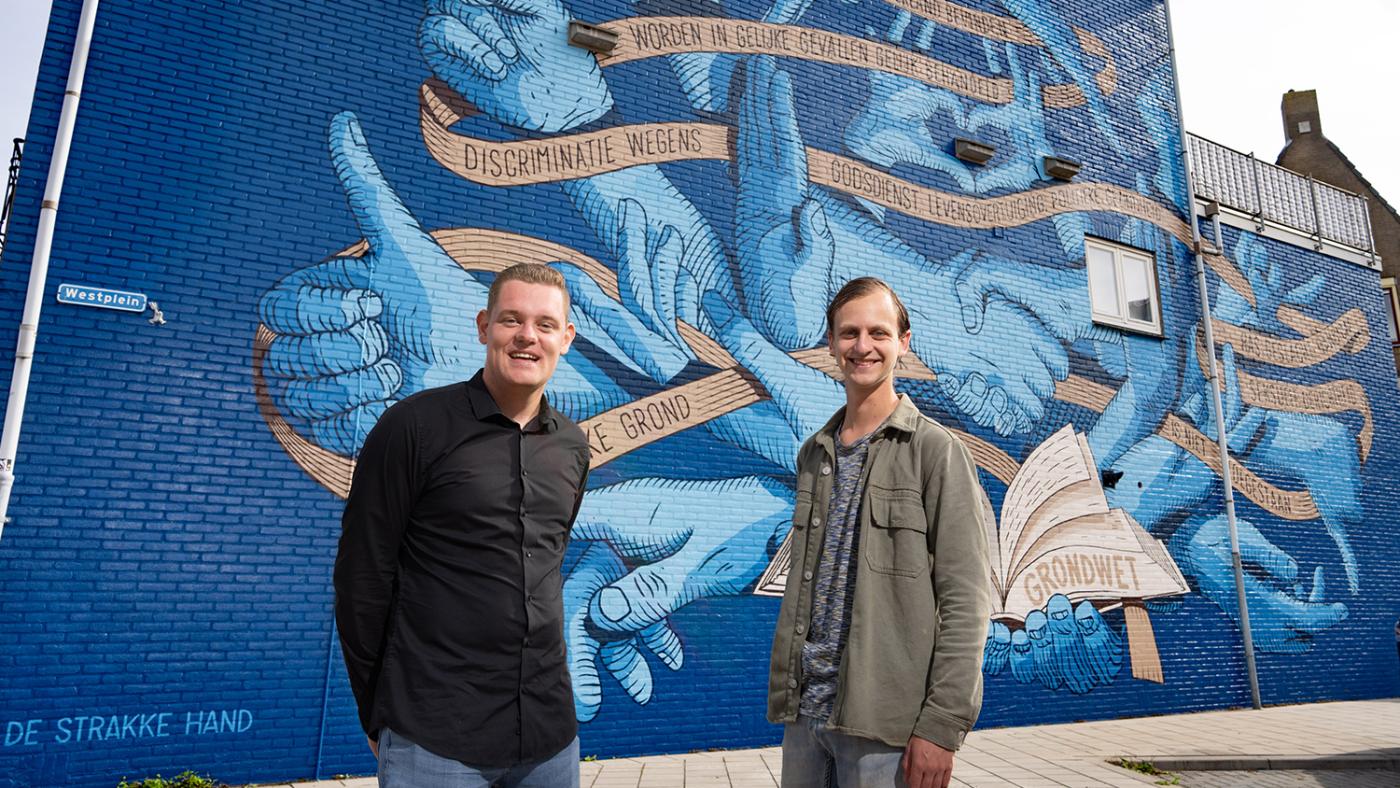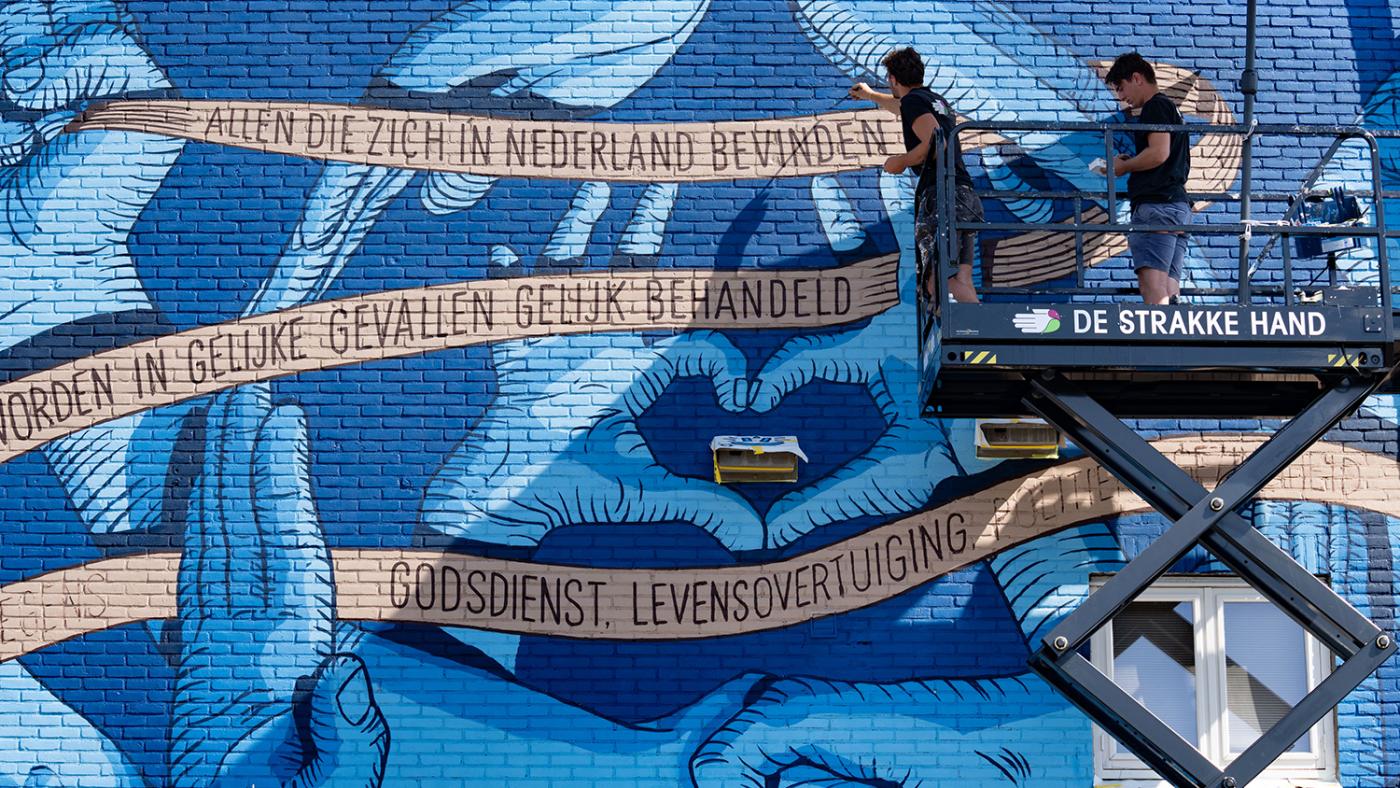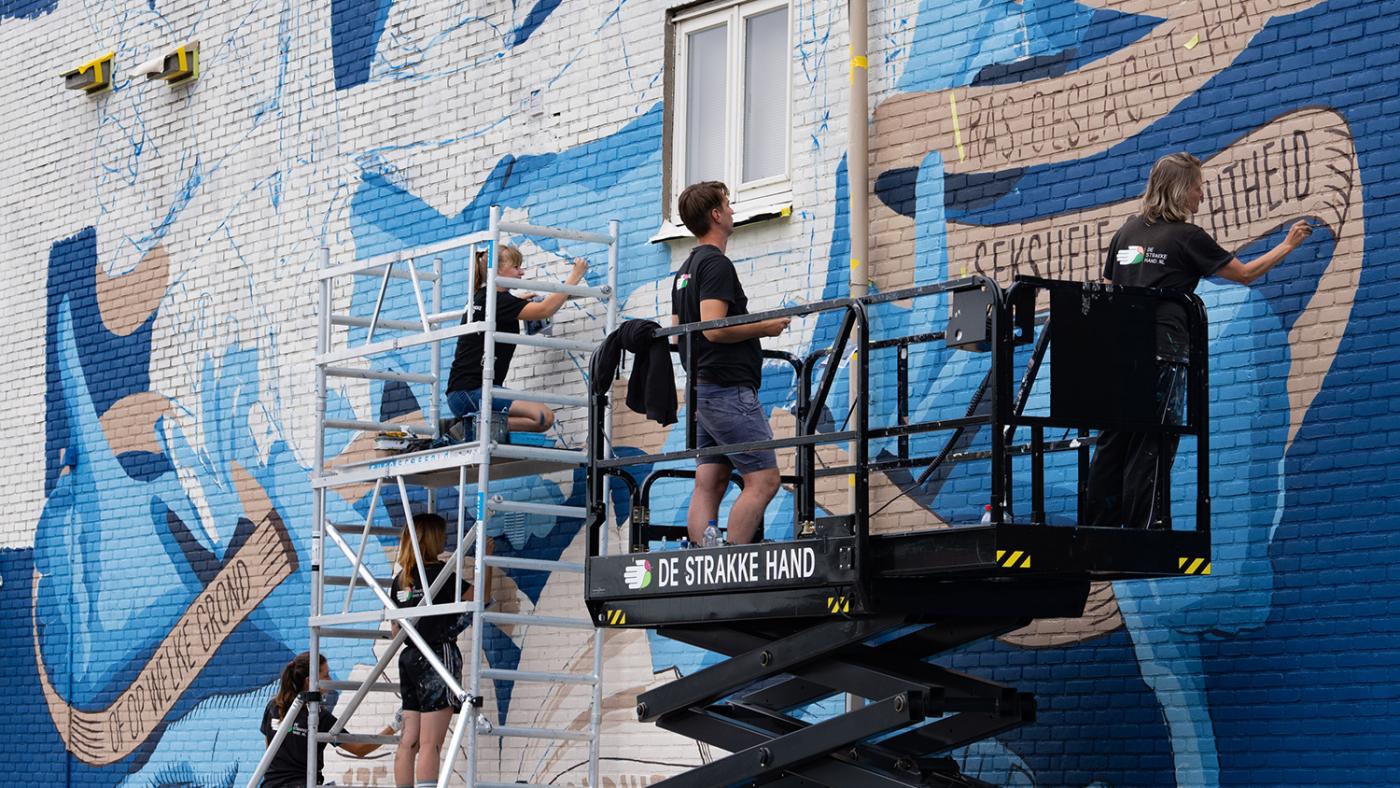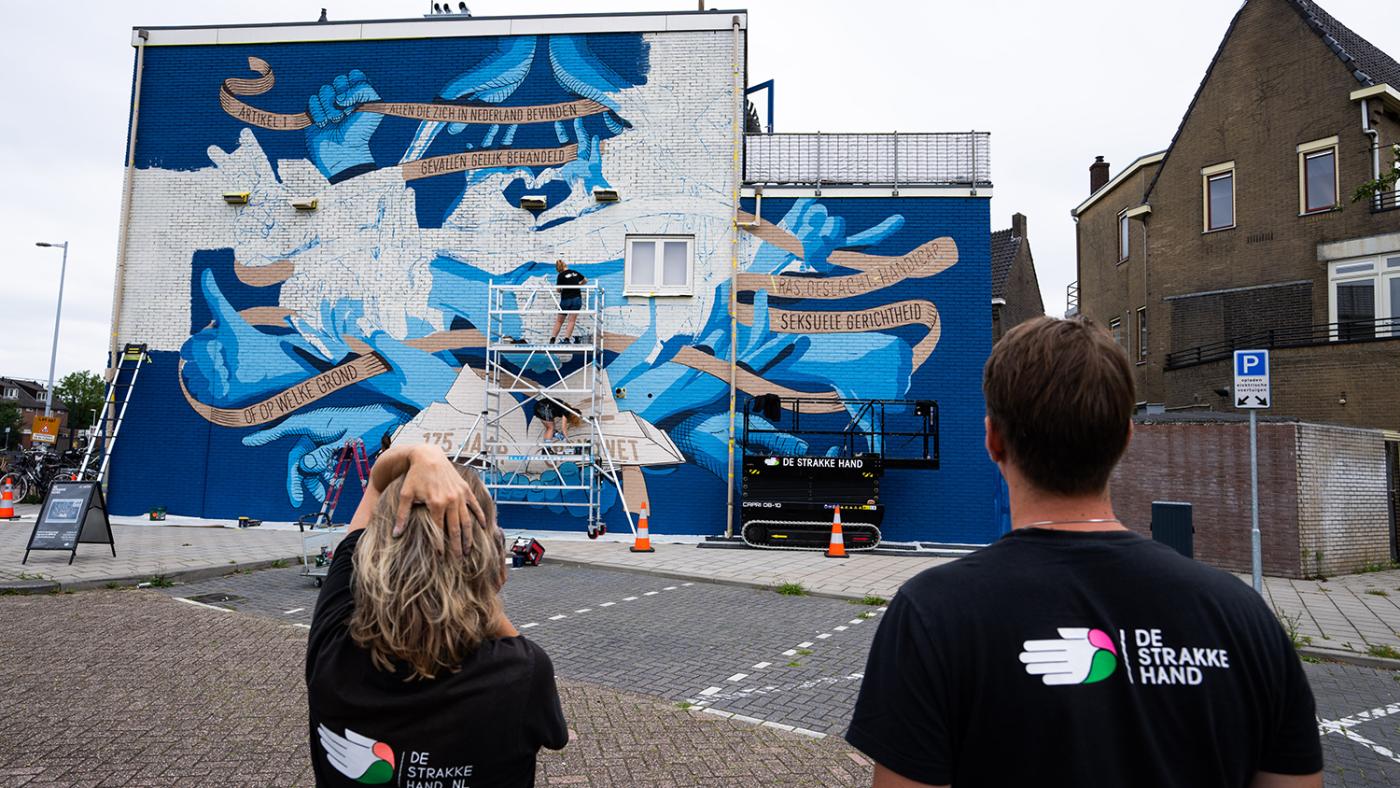New Utrecht mural is an ode to 175-year-old Dutch constitution
‘Young people would think differently about the constitution if they were better informed’

With its gigantic dimensions – more than 10 by 10 meters – and a bright azure that pops off the wall, the new mural by artist collective De Strakke Hand is hard to miss. It can be found at Hagelbuurt, opposite the Ulu mosque. It is inspired by the Dutch Constitution revised by Thorbecke on November 3, 175 years ago. This revision laid the foundation for a democratic constitutional state. The new mural was unveiled by rector Henk Kummeling and city councillor Linda Voortman.
“We are delighted with it,” says Marc Hanna, the Master’s student of Law who took the initiative for the mural, alongside Giel Heeringa. He only notices how impressively large the mural is once he finally stands in front of it. “The book alone is bigger than us.” But what he likes most about the artwork is the meaning behind it: “The blue hands that carry the Constitution stand for: ‘Careful, protect our Constitution.’”

The mural of De Strakke Hand. Photo: Ivar Pel
“All the principles of the constitution and our fundamental rights are reflected in this mural,” explains Giel Heeringa, who has just graduated and has been working as a junior lecturer at the Faculty of Law since the beginning of the current academic year. “The folded hands reflect how the Netherlands is a coalition country. I really like the thumbs up and down. We can disagree here, which is a good thing.”
Less freedom of movement
The idea to draw more attention to the Dutch Constitution came about around two years ago when they were second-year students following a course in constitutional law. After a guest lecture by professor and former politician Bas de Gaay Fortman, the students realised that legal scholars interested in improving the constitution should strive to raise awareness of its importance. The timing of the guest lecture could not have been better, the two students underscore: at the end of 2021, the Netherlands was in the middle of the Covid-19 pandemic.
There was a fiery debate around limiting fundamental rights and certain measures were being criticised more and more. "For example, it suddenly became more clear what freedom of religion means for society because churches were given a legal exceptional to remain open, while people had to work from home and we were obliged to attend lectures online," observes Marc.

Giel adds: “During the pandemic, people started paying more attention to the constitution. Even so, I often felt like they didn’t really know what it says. Under certain circumstances, such as the pandemic, restrictions may be imposed. On the other hand, the government may have overstepped fundamental rights too easily. The Constitution has many nuances and fundamental rights are not absolute. It would be valuable to discuss those nuances nationwide but that would require more general knowledge about the Constitution.”
No stiff statue
The measures to combat the spread of Covid appear to have become a divisive issue as different groups interpret certain articles of the Constitution in their own way. But, according to the students, the Constitution can also unite us, and they want to emphasize that. After the lecture, they decided to raise more awareness about the Bill of Rights. But how? They were not interested in a stiff statue or a dusty tribute. Instead, it had to be done in a way that suited the times and appealed to young people.
Giel and Mark then decided to do it through art. Together with two other law students, they started a collaboration with the Utrecht School of the Arts (HKU), which is making an exhibition about the first article of the chart, which states that everyone should be treated equally. Then, they decided to commission a mural and approached the artists of De Strakke Hand. The idea of having hands carry the constitution was proposed by Pauline Phoa, university lecturer and artist.
“The wall at Hagelbuurt was available and it would be a great place for the mural,” recollects Marc. In order to get the green light from the municipality, they had to show that there was sufficient support for the artwork in the neighbourhood. Marc: “We spent a few evenings visiting people all over the neighbourhood. We rang their doorbells and asked if they would be OK with a mural about the democratic constitutional state. We have come across people who said they didn’t like the Constitution.”

The mural commemorates the 175th anniversary of the Constitution, which will happen on November 3. “In 1848, Thorbecke laid the foundation for what the Netherlands looks like today," Marc explains. "He brought it all together and a lot of that is still reflected in the current constitution.” Giel adds that one of the most important changes made to the Constitution in 1848 was the advent of ministerial responsibility. "The king no longer had absolute power. The ministers became responsible for the king, creating a more democratic government. It laid the foundation for the democratic constitutional state we know today.”
On a break
The two Law students say that some of their peers became more interested in the Constitution. “It would be good for us to be more enthusiastic about it," states Marc. "It could lead to people having more faith in the Netherlands, in our beautiful democracy. It could make them appreciate our freedoms and be more satisfied with the country in which we get to live. I think the way people talk about the Constitution nowadays is inadequate. Maybe young people would give it some more thought if they saw it reflected in their lives.”
A 2021 study showed that more than 30 percent of young people in the Netherlands would be OK with temporarily pausing democracy to tackle complex and urgent problems, something that Marc and Giel find disappointing and worrying. Marc: “I wonder what they know about the Constitution. If young people were better informed, perhaps they'd be more likely to think that the Constitution is too valuable to put aside even if that would be temporarily convenient.”
“I also think it’s wrong to assume that the Constitution stands in the way of solving problems,” Giel adds. “Fundamental rights can actually help tackle complex issues, such as climate change. Take the Urgenda case, for example. The judge used fundamental rights to force the state to reduce CO2 emissions by 25 percent.”
Marc: “Our fundamental rights have been more present in the news recently but often in a negative way, such as when fundamental rights were restricted or when the political debate became more polarised. Through this mural, we want to do something that has nothing to do with politics because the Constitution is not political. Its focus is rather on the unifying aspect of the Constitution, which is for everyone.”